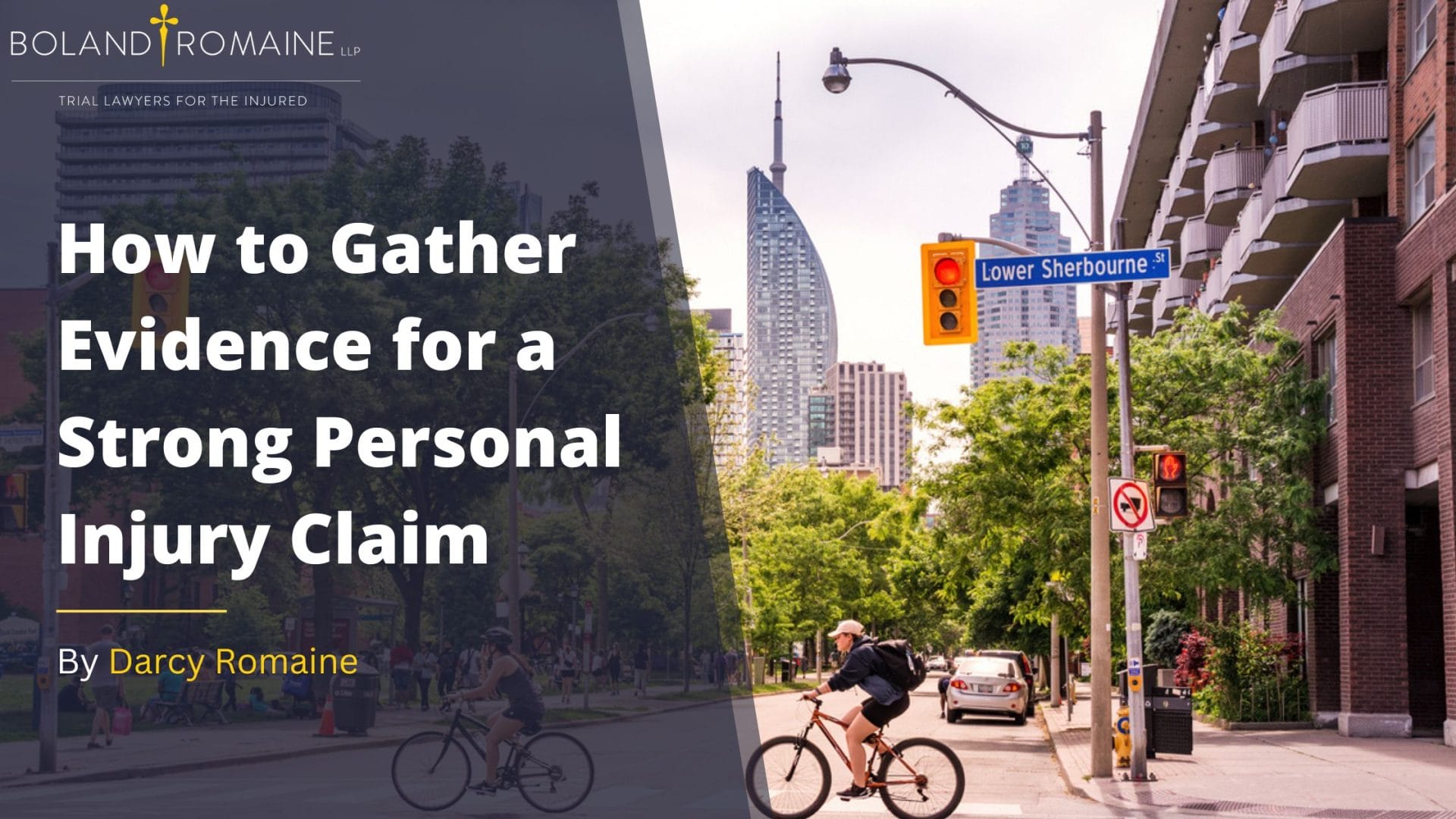How to Gather Evidence for a Strong Personal Injury Claim
- 18.11.2024
- Insights

In personal injury cases, gathering thorough and organized evidence is essential to building a claim that effectively demonstrates liability and supports your right to compensation. Strong evidence increases your chances of proving fault, substantiating the severity of your injuries, and achieving a favorable outcome. Here’s a comprehensive guide on the types of evidence to gather, tips for effective documentation, and how to strengthen your personal injury case.
Document the Scene Immediately
As soon as an injury occurs, documenting the scene is crucial. This documentation provides a snapshot of the environment and conditions that contributed to your injury. Here are ways to capture critical details at the scene:
- Photos and Videos: Take clear, well-lit photos and videos of the accident location. Include hazards that contributed to the injury, such as wet floors, icy patches, broken equipment, or inadequate lighting.
- Environmental Details: Document environmental factors (e.g., weather conditions in slip-and-fall cases, traffic signals, or surrounding visibility in vehicle accidents) that might clarify how the incident happened.
Seek Prompt Medical Attention
Obtaining medical attention promptly after an accident serves two purposes: it ensures that you receive proper treatment and creates a record of your injuries. This medical record is critical in linking your injuries directly to the incident in question.
- Medical Records and Treatment History: Maintain detailed records of all medical visits, treatments, diagnoses, and prescribed medications. If your condition worsens or additional complications arise, make sure these updates are documented as well.
- Doctor’s Notes and Prognosis: A doctor’s professional opinion about your injury’s impact on your daily life, work, and long-term health will help validate your claim and determine damages.
Gather Witness Statements
Witnesses who saw the incident or its immediate aftermath can provide valuable perspectives that support your claim.
- Collect Contact Information: Get contact details for witnesses at the scene so they can later provide statements if needed.
- Obtain Written or Recorded Statements: If possible, ask witnesses to provide written or recorded accounts while their memories are still fresh. These statements may confirm your version of events and contradict any opposing claims.
Preserve Relevant Physical Evidence
Sometimes, physical evidence can be vital in proving your claim.
- Injured Clothing or Damaged Property: Preserve any clothing or personal items damaged in the accident, as they may demonstrate the force or circumstances of the incident.
- Equipment or Hazardous Objects: If the accident involved specific objects, such as faulty equipment or hazardous surfaces, keep these items if possible. They can serve as powerful visual evidence if your claim goes to trial.
File an Official Report if Applicable
Filing an official report adds credibility to your claim, especially in workplace accidents or incidents involving third parties.
- Police Reports: In cases of car accidents or assaults, a police report provides an unbiased record of what occurred and may include officer observations or citations that support your claim.
- Incident Reports: In workplace injuries or accidents in commercial spaces, request a copy of any incident report filed with the business or organization responsible for the premises.
Collect Evidence of Financial Losses
Financial documentation is essential for substantiating claims for compensation.
- Medical Expenses: Keep all medical bills and receipts for treatments, medications, and assistive devices.
- Lost Wages Documentation: Obtain a letter from your employer verifying your missed workdays and lost income due to your injury.
- Other Related Costs: If you had to hire home care, child care, or pay for transportation due to your injury, keep receipts and records of these expenses.
Additional Tips for Gathering and Organizing Evidence
- Create Digital Backups: Make electronic copies of all documents, photos, and videos to prevent loss.
- Organize Chronologically: Sorting evidence by date can help you present a clear timeline of events.
- Stay Consistent: Ensure consistency between your written accounts, medical records, and witness statements to avoid discrepancies that could weaken your claim.
- Consult one of our injury lawyers: Boland Romaine personal injury lawyers can help you identify crucial evidence, guide you on preserving it, and ensure you meet all legal requirements.
Personal Injury Lawyers
Gathering robust evidence is the cornerstone of a successful personal injury claim. By documenting the scene, seeking timely medical care, collecting witness accounts, and meticulously tracking the impact of your injury, you can build a compelling case that substantiates your claim. If you’re unsure about how to proceed or need guidance on your case, consult one of our experienced personal injury lawyer who can help you gather, organize, and present evidence for the best possible outcome.




